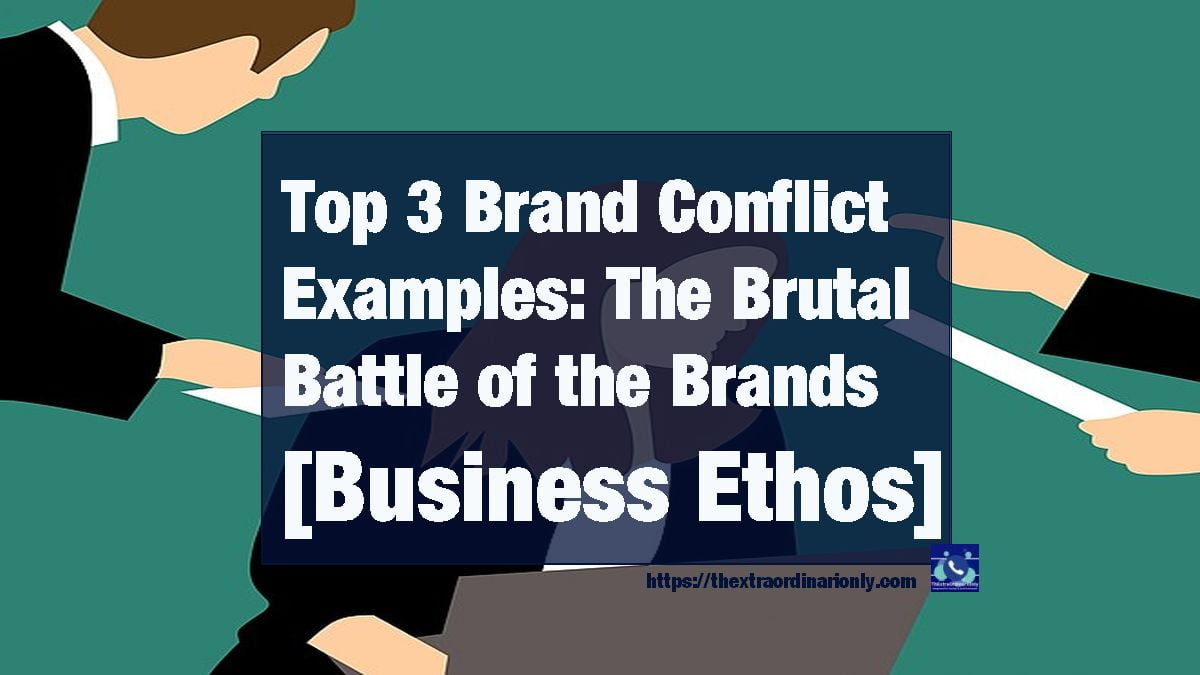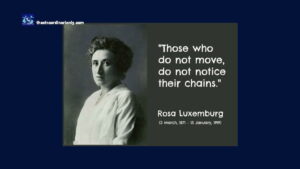The brand conflict and the brands at war
In a world where businesses are increasingly globalized and consumers have more choices than ever before, brand conflicts are inevitable.
Companies relentless on the path to expand their reach and try to tap into new markets are bound to come into conflict with other brands that are already established in those markets.
The battle of the brands is when two or more companies compete for the same market share or customer base, like Adidas and Puma. This can be done through advertising, price wars, or other means. The famous “cola wars” between Coca-Cola and Pepsi are two of the most well-known examples. These companies have been in competition for many years.
The inspiration for this blog post comes from an email received on December 17, 2022, from a Domain Registration Company in an overseas country. It read, in part …
… This is a formal email. We are the Domain Registration Service company in XXX, (Country). Here I have something to confirm with you. On December 17, 2022, we received an application from HHH Ltd requested “thextraordinarionly” as their internet keyword and (Country) (CN) domain names (domainname1.suffix, domainname2.suffix.country, domainname3.suffix.country, domainname4.suffix.country). But after checking it, we find this name conflict with your company name or trademark. In order to deal with this matter better, it’s necessary to send email to you and confirm whether this company is your distributor in (Country)?
Service and Operational Manager, Domain Registration Service company (Country)
The most important thing for companies to remember in the midst of a conflict is to protect their own reputation.
What would you do for your brand if you were in the same shoes of a looming conflict? Without rationing your strategy, share with us in the comments section at the end of the blog post.
Brand conflict definition
A brand conflict is a situation in which two or more brands are perceived to be in competition with each other. The term can be used to describe a situation in which two or more brands are competing for the same customer, or a situation in which two or more brands are competing for the same space in the market.
Brand conflict can also be used to describe a situation in which two or more brands are perceived to be in competition with each other because they are similar in some way.
Brand name conflicts
A brand name conflict is a situation in which two or more companies have the same or similar names. This can often lead to confusion among consumers, and create difficulties for the companies themselves. It can even result in legal action if one company feels that its brand is being damaged by the other.
If you do find yourself in a brand name conflict, the best course of action is to try to resolve it amicably. If that is not possible, you may need to consult with a lawyer to see if you have any legal options.
How does a name affect a business?
A name is one of the most important aspects of any business. It is the first thing that potential customers will see, and it will be a major factor in their decision to do business with you. A good name will set you apart from your competition and make you more memorable.
A bad name can turn customers away and make it difficult to build a successful business. Choose your business name carefully to ensure that it represents your company in the best possible light.
What happens if two companies have the same name?
If two companies have the same name, they may have to operate under different names in different markets, or one may have to change its name. In some cases, the companies may be able to reach an agreement on who can use the name in what markets.
You should learn from your competitor, but never copy. Copy and you die.
According to Sanyou Intellectual Property Agency,
A later business name infringes upon a prior trademark under any of the following circumstances: (1) the words highlighted in the business name infringe upon another person’s proprietary rights to a registered trademark; or (2) use of the business name, despite being proper, constitutes an unfair competition activity vis-à-vis the prior trademark holder.
Shi Yakai, attorney-at-law, Sanyou Intellectual Property Agency
How do I make sure company name is not taken?
Businesses have a responsibility to act ethically like these conflict free diamond brands. To simply avoid the fight for market share altogether, be the first to market with your brand name, a new product, and/or service.
If you are starting a new company, you want to make sure that the company name is not already taken. The last thing you want is to have to change your company name because someone else is already using it. There are a few ways to make sure that the company name is not taken.
- Search Google and other search engines. If the company name is already in use, it will likely show up in search results.
- Find out if the domain name available. If not, get another name altogether and do not register another brand’s domain name because it is not ethical.
- Ask friends, family, and business associates for their opinion. If no one can think of a better name, the company name may be a good choice.
- Conduct a search of the USPTO’s trademark database. If the company name is being used by another business, it may be trademarked and therefore unavailable.
- You may also check with the Secretary of State in the state where the company will be headquartered. Each state has a business entity search that can be used to check for the availability of a company name.
Brand conflict with ThExtraordinariOnly
Since inception, ThExtraordinariOnly has been hacked, traffic diverted, domain property hijacked, etc.
Why?
The most common reason is that it is cheaper for competitors to take advantage of a brand’s good reputation to drive traffic to their own website or products. Other reasons include to simply disrupt the brand’s online presence or trying to sell counterfeit products or services.
Protect your brand
What can brands do to protect their website, traffic and domain properties from hijacking? Doing things, such as keeping your domain registration information up to date and locked, and monitoring for any suspicious activity, are a step in the right direction. In the worst case scenario, file a trademark complaint if they believe their trademark is being infringed upon.
There are a few ways to avoid brand name conflicts before setting up a brand.
One is to choose a unique name that is not likely to be confused with another company’s name. Also, trademark your name so that it is legally protected.
Read further on Marketing MO‘s write-up on how to check for name conflicts.
Branding conflict
When a company launches a new marketing campaign similar to another’s existing marketing campaign, it could create confusion among consumers and lead to brand conflict. Additionally, if one company were to offer a new product or service that was similar to what the other company offers, it could also lead to a detrimental branding conflict, damaged relationships, decreased cooperation, legal problems, bad publicity, and other negative consequences.
In some cases, the conflict can get so out of hand that the government has to step in. The government may order both companies to stop their negative campaigns against each other. They may also impose fines or other penalties.
To avoid brand conflict, developing and maintaining a strong brand identity that is unique from the other company is important for each company.
Additionally, each company should avoid using marketing strategies or tactics that are similar to what the other company is using. By doing so, maintaining a strong and distinct brand identity, will help to avoid any confusion or conflict among consumers.
Brand conflict management
We reiterate that the likelihood of brand conflict increases as the world of business becomes increasingly global. Is there room for second place when it comes to business?
Brand conflict can take many forms, from two companies with similar names or logos to two companies in the same industry whose products compete with each other, or such as two companies with different business ethos coming into conflict.
Trying to one-up each other in an attempt to get more customers with subtle jabs in marketing and advertising that lead to full-blown legal battles are not foreign in a rapidly globalizing world. More and more brands are finding themselves in conflict with one another.
Managing brand conflict is a challenging but essential task for any business that wants to protect its brand and reputation.
Check out Brandeis University study program on conflict resolution and coexistence.
There are a few key steps to take when managing brand conflict.
First, it’s important to identify the source of the conflict. Is it a case of mistaken identity, or is there a genuine rivalry between the two brands? Once the source of the conflict is understood, it’s easier to develop a brand conflict strategy for addressing it.
Identity
If the conflict is due to a case of mistaken identity, the best course of action is often to take steps to differentiate your brand from the other company. This can be done through branding and marketing efforts that make it clear what your company does and what makes it unique.
Rivalry
If the conflict is due to a genuine rivalry, you’ll need to take a more aggressive approach. This may involve legal action, such as trademark infringement lawsuits, or public relations campaigns that seek to damage the other brand’s reputation.
No matter the source of the conflict, managing it effectively is crucial to protecting your brand. By taking swift and decisive action, you can avoid long-term damage to your company’s reputation and bottom line.
What is the best approach for brand conflict resolution for ThExtraordinariOnly? Share with us in the comments section, below.
Conflict brand strategy
In business, conflict brand strategy is the practice of deliberately choosing two or more products or services that compete with each other in the same market space.
The goal is to create a unique selling proposition for each product or service that differentiates it from the others in the market.
Use case of conflicting brand strategy
There are several reasons why a company might choose to use a conflict brand strategy.
First, it can be an effective way to segment the market and reach a specific target audience. By offering two or more products that appeal to different segments of the market, the company can maximize its chances of reaching its sales goals.
Second, a conflict brand strategy can help a company to stand out from its competitors. In a crowded marketplace, it can be difficult for a company to differentiate its products from those of its rivals. Offering two or more products that compete with each other can help the company to grab attention and stand out from the crowd.
Third, an effective brand conflict strategy can be a way to increase market share. If one of the products in the market is struggling to gain traction, the company can use the other product to help boost sales.
Fourth, a buzzing conflict brand strategy creates excitement around a company’s products. Launching two competing products can generate a lot of interest and excitement, which can lead to increased sales.
Risks of brand conflict strategy
There are some risks associated with using a conflict brand strategy.
- It can be difficult to manage two or more products that are in competition with each other. The company needs to be careful to avoid cannibalizing sales of one product with the other.
- A conflict branding strategy can create confusion among consumers. If the products are too similar, it can be difficult for consumers to understand the differences and make a purchase decision.
Despite the risks, a conflict brand strategy can be a powerful tool for companies that are looking to boost sales and stand out in a crowded marketplace.
Famous conflicts in companies
There are bound to be conflicts at every workplace. Some conflicts are minor, such as disagreements over the best way to complete a task. Other conflicts are more serious, such as when two employees are vying for the same promotion.
While conflict can be frustrating, it can also be a source of creativity, innovation, notwithstanding, conflict in marketing. After all, when people are allowed to freely express their ideas, they are more likely to come up with new and better solutions
There are many famous conflicts that have arisen in companies. One such conflict between brands is in the thick of Apple Inc. and Samsung.
This conflict began in 2011 when Apple accused Samsung of infringing on its patents. The conflict escalated in 2012 when Samsung was ordered to pay Apple $1 billion in damages. The conflict continued in 2014 when Samsung was ordered to pay an additional $119 million to Apple.
In 2015, the conflict escalated further when Apple was ordered to pay Samsung $548 million. The conflict between Apple and Samsung is one of the most famous brand wars examples in the business world.
Explore further what to do when conflict rises with a 3rd party.
What is conflict in marketing?
In marketing, conflict is the deliberate attempt to create disagreement between two parties in order to influence their decision-making. It can take many forms, from overt aggression to subtle manipulation, and is often used in situations where one party has more power than the other.
Get ready for Part 2 of ThExtraordinariOnly blog post on channel conflict examples when you join our entrepreneur squad. Proceed to your inbox to confirm your email.
We will cover, in detail, topics like detecting channel conflict, causes and types of channel conflict including multichannel conflict examples, horizontal channel conflict example, inter type channel conflict example, channel conflict in e-commerce with examples from Nike channel conflict, Walmart channel conflict, Amazon channel conflict.
3 brutal brand conflict examples
Are there famous examples of brand conflict of interest that have led to positive outcomes? Let us find out from the following brand wars examples.
1. The Apple vs. Microsoft feud
The rivalry between Apple and Microsoft is legendary. They have been competing in the computer and software industry for many years. It started in the early 1980s when Microsoft released its first version of Windows, which was very similar to Apple’s operating system.
Apple sued Microsoft, but the case was eventually settled out of court. The two companies have been feuding ever since.
Despite the ongoing conflict, the two companies have actually collaborated on several occasions. For example, Microsoft Office is available for both Mac and Windows, and Apple offers a version of iTunes for Windows.
2. The Google vs. Amazon feud
Google and Amazon are two of the largest tech companies in the world. They compete in several areas, including cloud computing, artificial intelligence, and e-commerce.
The feud between Google and Amazon started in 2015 when Amazon stopped selling Google’s Chromecast streaming devices. Google then removed YouTube from Amazon’s Fire TV streaming devices.
The conflict escalated in 2018 when Google stopped allowing Amazon’s Echo Show devices to access YouTube. Amazon then stopped selling some of Google’s Nest products.
However, the two companies have actually collaborated on several occasions despite the ongoing feud. For example, Amazon’s Alexa voice assistant can be used to control Google’s Nest products, and Google’s Assistant voice assistant can be used to control Amazon’s Echo devices.
3. The Tesla vs. Toyota feud
Tesla and Toyota have been feuding for years. It started in 2010 when Toyota decided to invest $50 million in Tesla.
In 2013, the feud was fueled when Tesla sued Toyota for allegedly copying its patents. The two companies eventually settled the lawsuit out of court.
Despite the ongoing conflict, Toyota has supplied batteries for Tesla’s electric cars, and Tesla has supplied batteries for Toyota’s hybrid cars. Thus, the two companies collaborate on several occasions.
4. The Nike vs. Adidas feud
These two rival companies are the two largest sportswear manufacturers in the world and have been in competition for many years.
The feud between Nike and Adidas started in 2014 when Adidas signed a sponsorship deal with the National Basketball Association. Subsequently, Nike followed suit and signed a sponsorship deal with the National Football League.
In 2017, when Adidas signed a sponsorship deal with the National Hockey League, the conflict escalated. Next, Nike signed a sponsorship deal with the National Collegiate Athletic Association.
Nike has supplied uniforms for Adidas’ soccer teams, and Adidas has supplied uniforms for Nike’s basketball teams, notwithstanding the ongoing feud.
Russel Brand conflict
Russell Brand is an English comedian, actor, radio host, author, activist, and content creator.
He first came to public attention as a stand-up comedian, and was later cast as the title character in the British sitcom, The Russell Brand Show. He has also appeared in a number of films, including Forgetting Sarah Marshall, Get Him to the Greek, Arthur, and Rock of Ages.
In recent years, Brand has become increasingly involved in political and social activism. He has campaigned on a number of issues including drug reform, homelessness, and mental health and co-founded the production company Trew Era Media. He has also released a number of books, including My Booky Wook, Revolution, and Recovery.
Russell Brand is well-known for his outspoken views on a wide range of topics, from politics to pop culture. This has led to him becoming a controversial figure, involved in a number of high-profile conflicts, both on- and off-screen.
Here, we take a look at some of the most notable examples.
In 2014, he was criticized for making a joke about the death of actor Robin Williams. He was also criticized for his comments on the 2014 Gaza conflict, and for an incident in which he threw a water bottle at a photographer.
Lesson from brand conflict examples
What can we learn from unhealthy top brand image conflicts?
- For one, we can learn how not to handle conflict.
- We can also learn what not to say and do when confronted with a difficult situation.
- We can learn how to better manage our own emotions during times of conflict.
- Finally, we can learn how to effectively communicate with others during times of disagreement.
Healthy top brand conflict
The fight for market share is when companies compete for the same space in the marketplace
There are many examples of healthy top brand conflict.
One example is when two companies compete for market share. This can result in each company striving to be the best in the industry, which can lead to innovation and higher quality products and services for consumers.
Another example is when two companies cooperate to create a new product or service. This can lead to both companies learning from each other and developing new best practices.
When two companies operate in the same space, they are bound to come into conflict. This is especially true when their products are similar or their target markets overlap, and it is difficult to know who is in the right and who is in the wrong.
With brands also having a responsibility to their shareholders to make money, it can sometimes lead to difficult decisions when it comes to conflicts between brands. There are a few different ways to resolve brand conflicts. One is to simply engage in positive marketing that highlights the differences between your brand and your competitor’s.
This means being careful not to stoop to their competitor’s level, avoiding anything that could be seen as an endorsement of their rival’s product, and being ready to defend their own brand against any attacks.
If all else fails, you can always resort to legal action. But before you do anything, it’s important to make sure that you understand the risks and rewards of each option.
In the end, the best way to win a brand conflict is to have a superior product or service. If customers are happy with what you’re offering, they’re not likely to switch to your competitor, no matter how much they try to badmouth your brand.
Read further on why you need conflict in a good brand story (Business of Story)
Importance of business ethos in brand conflict
Are saddened and perplexed by the growing unethical brand conflict of growing businesses? Here is a solution.
When two companies are in conflict, it is important to remember the business ethos. This is the code of conduct that all businesses should follow. The business ethos includes principles such as honesty, integrity, and fair dealing.
It is important to remember the business ethos during a conflict because it can help to resolve the conflict. If both companies adhere to the business ethos, they will be more likely to come to a resolution that is fair for both sides.
Afraid of brand conflict?
Is your brand conflict worrying? Here are quotes to help you keep your head high up!
I feel very, very proud that so many people have copied me.
Why escape your intended purpose by copying and trying to be someone else? You will discover who you were meant to be only after you have shown confidence being yourself.
FAQs
What words Cannot be used in a company name?
There are a few words that cannot be used in a company name in the United States. These words are “corporation,” “incorporated,” “company,” or “limited.” These words are restricted because they give the impression that the company is a different legal entity than it actually is.
What is meta conflict?
Meta conflict is a type of conflict that occurs when two or more parties are in conflict with each other over the interpretation or resolution of a previous conflict. Meta conflict can often be seen as a battle over who gets to define what the original conflict was about, or who gets to determine how it should be resolved.
This type of conflict can be particularly challenging to resolve, as each party may feel that their interpretation of the situation is the only correct one. In some cases, meta conflict may even lead to physical violence as parties attempt to assert their authority over the situation.
On the other hand, a meta brand conflict is a conflict that arises when two or more brands are competing for the same customer base or market share. A meta brand conflict can also arise when two or more brands are vying for the same space in the market, such as when two competing brands are selling the same product.
What are the 3 P’s of branding?
The three P’s of branding are product, price, and promotion. By focusing on these three areas, companies can create a strong and recognizable brand. Product refers to the physical product or service that a company offers. Price refers to the way a company prices its products or services. Promotion refers to the way a company promotes its products or services. By focusing on these three areas, companies can create a strong and recognizable brand.
What are the 4 types of brand?
There are many types of brands, but some of the most common include service marks, certification marks, trademarked logos, and branded products.
Service marks are used to identify businesses that provide a service, while certification marks are used to identify products or services that meet certain standards.
Trademarked logos are used to identify a company or product, while branded products are products that have been manufactured by a company and have their name or logo on them.
Does this answer satisfy, ‘What are the 3 types of brands’ question?
What is business ethos?
A business ethos, not to be confused with business ethics, is the culture and values that a company or organization uses to guide its business practices. This can include everything from the way the company treats its employees and customers to the types of products or services it provides. A strong business ethos can help a company to stand out from its competitors and build a loyal customer base.
Business ethics, on the other hand, is the study of right and wrong in the business world. This can include topics such as bribery, fraud, and insider trading.
Brand conflict disputes references
- Startup guide to avoiding brand name conflicts – Child and Child
- 7 famous legal disputes in recent years – Inlea
- Use the free Brandeis time conflict form – PDF Filler
- How to avoid business name conflicts – BrandBucket
- Brand conflict: An investigation of potential brand conflict between Virgin Atlantic and Virgin Express – Dr Konstantinos Kalligiannis et al.
- Peace and conflict studies – Brandeis University
- Conflict between a prior company name and a trademark – Dreyfus
- Conflicts over business names and trademark rights in China – China Business Law Journal
- Disputes about similar business names – Australian Securities and Investment Commission, ASIC
Ask us for help.





